| 行业应用: | 仪器仪表 仪器仪表 |
SRS射频信号发生器在金刚石氮空位色心的研究介绍
量子计算和量子传感近年来受到了广泛的关注.金刚石氮空位色心以其简单稳定的自旋能级结构、高效便捷的光学跃迁规则以及室温下超长的自旋量子态相干时间而成为量子信息科学中引人瞩目的新星,近十年来,金刚石氮空位色心的研究呈爆炸式增长(见图1)
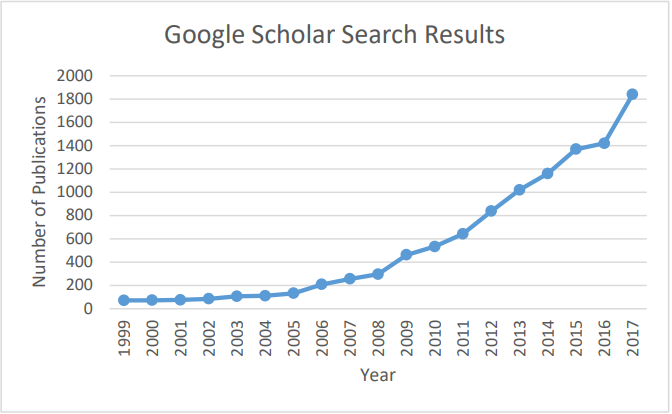
图1:每年提及“氮空位”和“金刚石”的出版物总数(Google Scholar)。
顾名思义,氮空位色心(NV-Nitrogen-Vacancy center)(图2)是由一个氮原子取代金刚石中的一个碳原子,然后捕获周围的一个空穴形成的。在NV位上悬浮键的电子通过杂化产生自旋-1系统,具有明确的能量状态和较长的自旋寿命,即使在室温下也是如此。这样就可以通过磁共振的自旋操控技术在精确定时的微波磁场下来控制NV点的自旋状态。由于它的能级对外部磁场和电场都很敏感,使得这种自旋状态可以作为外部环境的传感器。
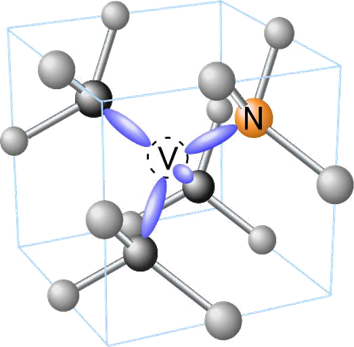
图2:金刚石中NV色心由碳原子(灰色)、氮原子(橙色)和相邻空位组成,并有悬空键(紫色)[1]。
在NV实验中监测到的能量状态如图3所示:
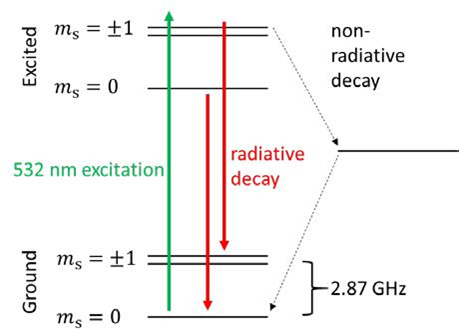
众所周知,金刚石中的缺陷会使原本透明的晶体产生颜色(例如,氮取代缺陷使金刚石呈现黄色,而硼取代则产生蓝色)。在532nm激光激发下,NV在637 nm处产生荧光衰减。重要的是?s=±1自旋态是无辐射衰减,从而提供了一种利用监测光致发光变化来检测自旋状态的方法。也就说,当自旋态被激发到不稳定态?s =±1级(使用2.87 GHz微波),有缺陷的红光输出会略有减少(图4 (a))。此外,?s =±1的能级状态可以被外部磁场调节。通过测量吸收峰之间的频率分裂(如图4(b)所示),可以测量出该外部磁场。
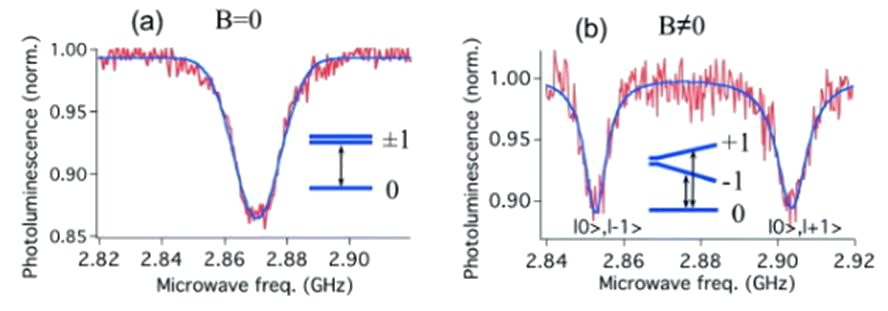
图4。(a)在2.87GHz跃迁共振微波作用下的光致发光衰减(??= 0和1状态之间)。
(b)非零磁场下的??= +1和-1状态之间的分裂[3]。
能量状态的改变也可能是由外部电场[4],温度[5] [6]或金刚石晶格的应变[7]引起,这使得NV光学探测磁共振(ODMR)对于感测这些量中的任何一个都有作用。因为NV轴可以匹配金刚石晶格中4个晶轴中的任何一个,因此可以执行3D矢量场感测[8]。例如,结合共聚焦显微镜技术可以解决NV共振位移的空间分辨图,趋磁细菌产生的磁场矢量图谱详见(图5)[g]。
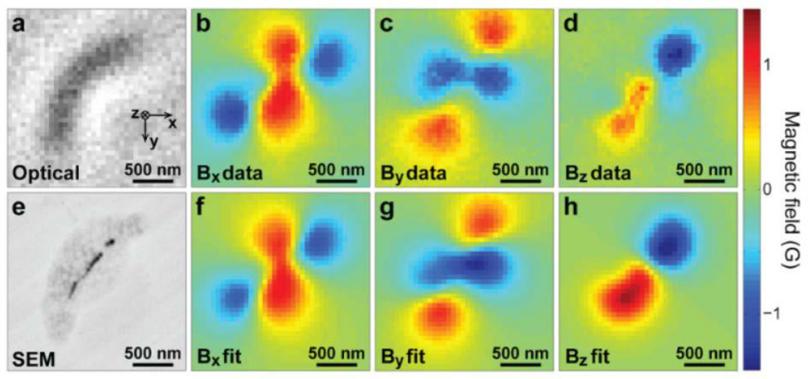
图5。(a)趋磁细菌的光学图像。(e)同一细菌的SEM图像,其中磁性纳米粒子(黑色)清晰可见。(b,c,d)磁场x, y, z分量由NV金刚石光学探测磁共振测量确定。(f,g,h)实测场分布的数值拟合(来自[g])。
和大多数磁共振测量一样,第 一次NV实验涉及大量的缺陷。然而,令人惊讶的是,在低缺陷密度的样品中,单个NV色心可以被隔离和监测。由于NV是原子大小的,这意味着单自旋NV传感器的空间分辨率仅受限于与其感兴趣样品的距离。例如,通过在原子力显微镜探针的尖 端定位单个NV色心,已经证明了具有25nm分辨率和56nT/Hz-1/2的磁畴成像[10]。
此外,NV色心的极端敏感性和生物相容性(金刚石只是碳,因此没有表现出毒性),显示了纳米核磁共振测量的特殊前景,其中NV中心被耦合到与之感兴趣的有机和生物分子的核自旋的杂散场上[11]。因此,NV被定位为革命性的纳米磁共振成像技术,并提供了一种在环境条件下获得单分子3D图像的途径[12]。事实上,NV色心的单质子自旋探测已经被证实[13]。
NV场感测和纳米成像不限于静态场。现在,一些研究小组已经证明了基于NV探测和时变磁场的磁场扫描是由铁磁铁中的自旋波产生[14][15]或电流波动[16][17]。
为了进一步增加NV应用的长列表、长寿命的自旋状态、与外部场的可操作性以及与环境的可调谐相互作用(通过晶格工程)也使它们成为量子计算中信息单元“qubit”的领跑者[18]
量子计算和传统计算一样,可能需要将长寿命存储位与快速处理位分离。将长寿命的“内存”量子位(基于附近的氮原子或13c原子核自旋)与NV自旋的耦合[19][20][21]可以精确地提供这种内存和处理架构。超导磁通量子位(另一个强大的量子计算候选者)和NV色心之间的相干耦合也得到了证明[22],为量子处理和存储所需要的光学与微波之间读写的接口铺平了道路。
SRS产品在NV研究中的应用
在NV金刚石中进行光学检测磁共振实验的关键是扫描微波频率的能力。为了测量自旋态寿命,执行微波脉冲序列也很有用。SRS射频信号发生器(SG384和SG386)和矢量信号发生器(SG394和SG396)非常适合在NV-ODMR研究中的所需要的频率范围内产生微波。下面是使用SRS产品的NV相关参考的列表。
1. Optical magnetic imaging of living cells
https://www.nature.com/articles/nature12072
使用设备: SG384 (+ amplifier)
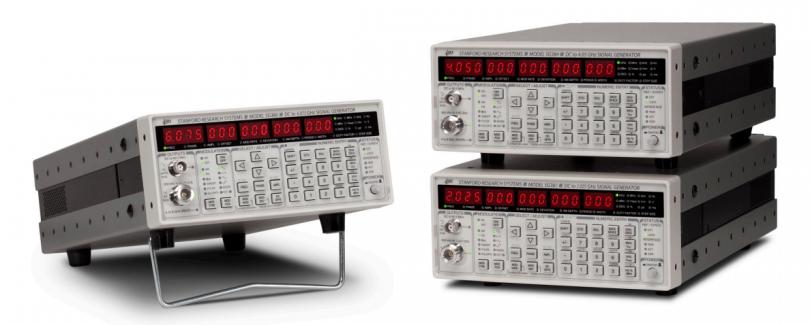
2. Miniature Cavity-Enhanced Diamond Magnetometer
https://journals.aps.org/prapplied/abstract/10.1103/PhysRevApplied.8.044019
使用设备: SG394 (+ 16W amplifier, circulator)
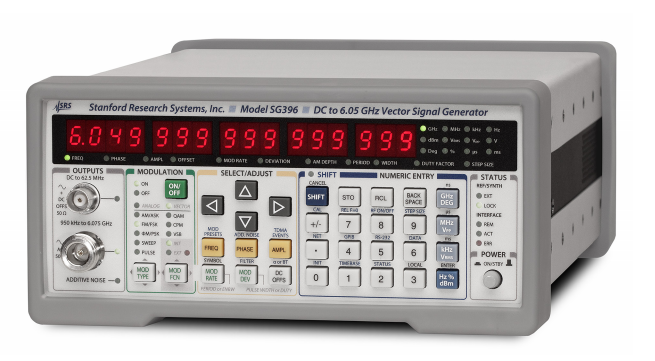
3. Microwave-free magnetometry with nitrogen-vacancy centers in diamond
https://aip.scitation.org/doi/full/10.1063/1.4960171
使用设备: SR865, SIM960
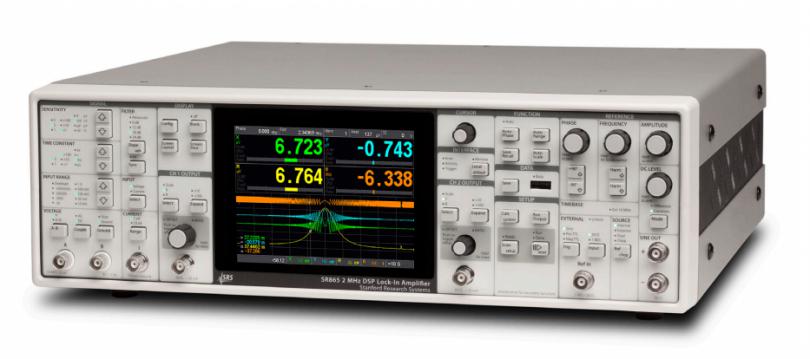
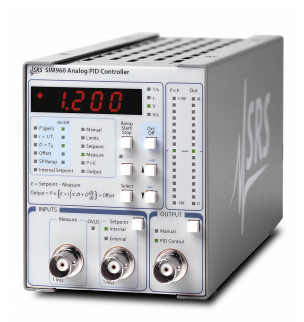
4. Precision temperature sensing in the presence of magnetic field noise and vice-versa using
nitrogen-vacancy centers in diamond
https://arxiv.org/abs/1802.07224
使用设备: SG394(2x) (+power combiner, switch, and amplifier), SR850
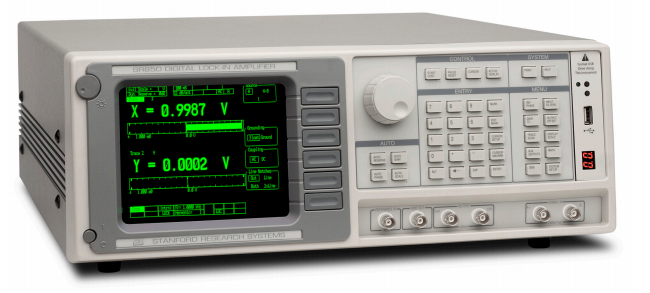
5. Quantum Control of Nuclear Spins Coupled to Nitrogen-Vacancy Centers in Diamond
(dissertation, S. Sangtawesin)
使用设备: SG394 (+ amplifier)
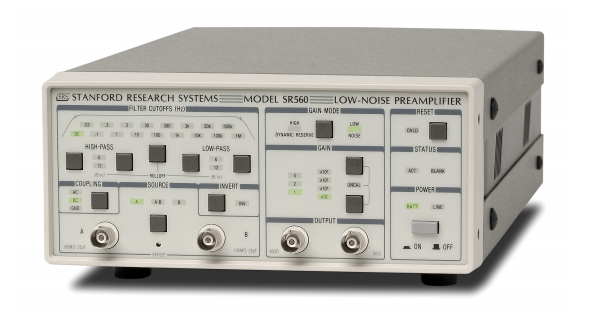
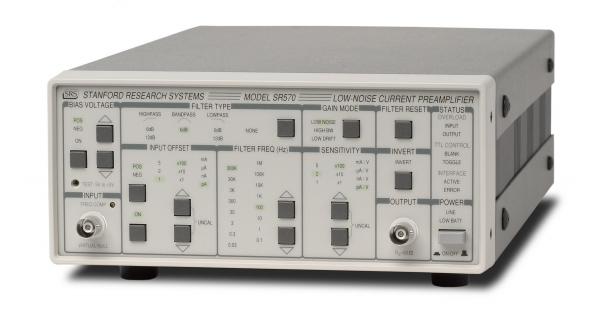
References
[1] Z. Fotoniki, "Diamonds with nitrogen-vacancy (NV) color centres," 2018. [Online]. Available:
https://zf.if.uj.edu.pl/en/node/518.
[2] R. M. Teeling-Smith, Single Molecule Electron Paramagnetic Resonance and Other Sensing
And Imaging Applications with Nitrogen-Vacancy Nanodiamond, Columbus, Ohio: OhioLink,
2015.
[3] J.-F. Roch, "Optical determination and magnetic manipulation of a single nitrogen-
vacancy color center in diamond nanocrystal," Advances in Natural Sciences: Nanoscience
and Nanotechnology, 2010.
[4] J. Wrachtrup, "Electric-field sensing using single diamond spins," Nature Physics, vol. 7, pp.
459-463, 2011.
[5] J. Wrachtrup, "High-Precision Nanoscale Temperature Sensing Using Single Defects in
Diamond," Nano Letters, vol. 13, pp. 2738-2742, 2013.
[6] M. D. Lukin, "Nanometre-scale thermometry in a living cell," Nature, vol. 500, pp. 54-58,
2013.
[7] S. Prawer, "Electronic Properties and Metrology Applications of the Diamond NV- Center
Under Pressure," Physical Review Letters, vol. 112, p. 047601, 2014.
[8] D. D. Awschalom, "Vector magnetic field microscopy using nitrogen vacancy centers in
diamond," Applied Physics Letters, vol. 96, p. 092504, 2010.
[9] R. L. Walsworth, "Optical magnetic imaging of living cells," Nature, vol. 496, pp. 486-489,
2013.
[10] A. Yacoby, "A robust scanning diamond sensor for nanoscale," Nature Nanotechnology,
2012.
[11] D. Rugar, "Nanoscale Nuclear Magnetic Resonance with a Nitrogen-Vacancy Spin
Sensor," Science, vol. 339, pp. 557-560, 2013.
[12] S. Castelletto, "Towards Single Biomolecule Imaging via Optical Nanoscale Magnetic
Resonance Imaging," Small, vol. 9, p. 4229, 2015.
[13] A. O. Sushkov, "Magnetic Resonance Detection of Individual Proton Spins Using Quantum
Reporters," Physical Review Letters, vol. 113, p. 197601, 2014.
[14] C. S. Wolfe, "Spatially resolved detection of complex ferromagnetic dynamics using
Optically detected nitrogen-vacancy spins," Applied Physics Letters, vol. 108, p. 232409, 2016.
[15] C. Du, "Control and local measurement of the spin chemical potential in a magnetic
insulator," Science, vol. 357, pp. 195-198, 2017.
[16] S. Kolkowitz, "Quantum electronics. Probing Johnson noise and ballistic transport in
normal metals with a single-spin qubit," Science, vol. 347, pp. 1129-1132, 2015.
[17] A. Waxman, " Diamond magnetometry of superconducting thin films," Physical Review B,
vol. 89, p.054509, 2014.
[18] R. H. a. L. Childress, "Diamond NV centers for quantum," MRS Bulletin, vol. 38, pp. 124-
138, 2013.
[19] M. D. Lukin, "Quantum Register Based on Individual Electronic and Nuclear Spin Qubits
In Diamond," Science, vol. 316, pp. 1312-1316, 2007.
[20] D. D. Awschalom, "A quantum memory intrinsic to single nitrogen–vacancy centres in
diamond," Nature Physics, vol. 7, pp. 789-793, 2011.
[21] M. D. Lukin, "Room-Temperature Quantum Bit Memory Exceeding One Second," Science,
vol. 336, pp. 1283-1286, 2012.
[22] K. Semba, "Coherent coupling of a superconducting flux qubit to an electron spin
ensemble in diamond," Nature, vol. 478, pp. 221-224, 2011.
[23] C. Degen, "Single-proton spin detection by diamond magnetometry," Science, 2014.
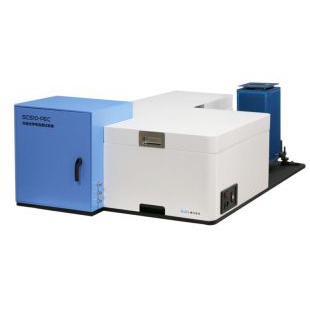
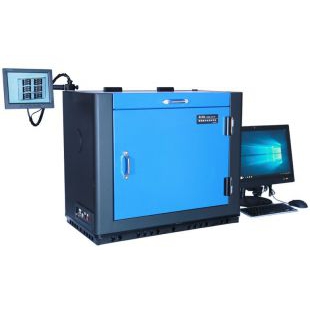
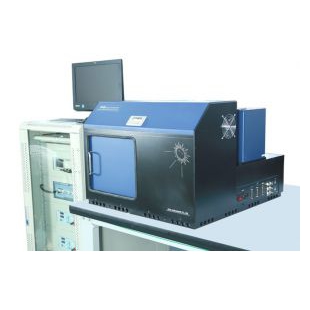
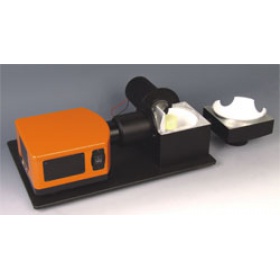
北京卓立汉光仪器有限公司
仪器网(yiqi.com)--仪器行业网络宣传传媒